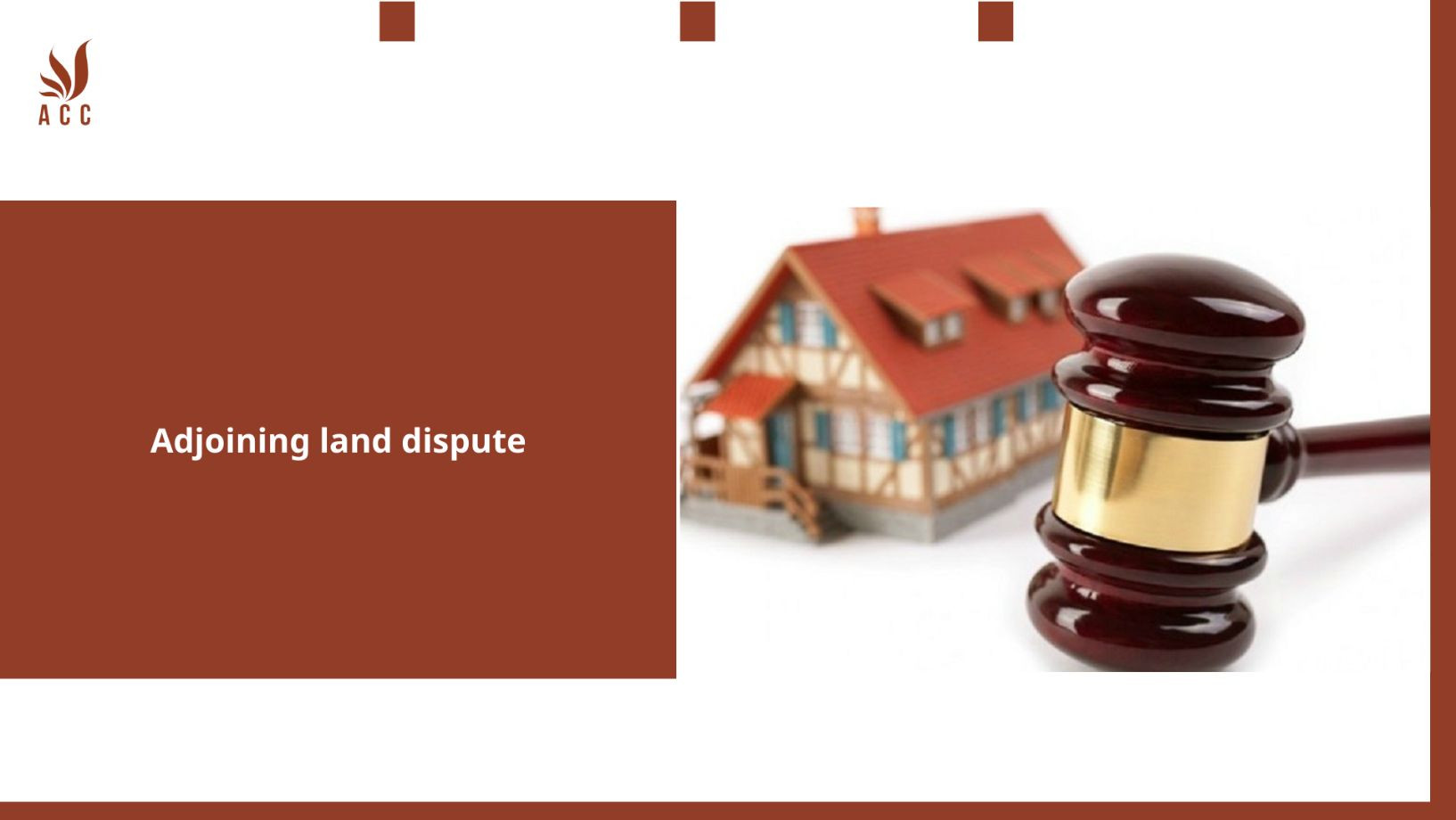An "adjoining land dispute" refers to a conflict or disagreement between property owners whose lands share a common boundary, often referred to as adjoining properties. These disputes frequently involve issues related to property boundaries, land use, encroachments, and other matters arising due to the proximity of the properties.

I. Key considerations in an adjoining land dispute include:
-
Boundary Disputes: Conflicts may arise over the precise location of property boundaries, which can be due to unclear property descriptions, outdated surveys, or encroachments.
-
Encroachments: An encroachment occurs when a structure, such as a fence, building, or landscaping, extends onto a neighboring property. This can lead to disputes regarding property boundaries and the removal or adjustment of encroaching structures.
-
Easement Rights: Easements may grant one property owner the legal right to use or access a portion of a neighboring property for a specific purpose, such as a shared driveway or utility access. Disputes can occur when the terms and use of easements are contested.
-
Land Use Conflicts: Neighbors may have disagreements about how the land is used, such as concerns about noise, odors, or business operations that affect the neighboring property.
-
Environmental Concerns: Disputes may involve environmental factors, such as drainage issues, soil erosion, or pollution that affects adjacent properties.
-
Building or Renovation Disputes: Conflicts can emerge when one neighbor's construction or renovation work negatively impacts the other neighbor's property, such as through noise, disruption, or concerns about potential damage.
II. Resolving adjoining land disputes often involves communication, legal action, or other conflict resolution methods:
-
Open Communication: Engage in open and respectful dialogue with the neighboring property owner to discuss the issue and seek an amicable solution. Many disputes can be resolved through direct communication.
-
Mediation: Consider involving a neutral third party, such as a mediator, to facilitate discussions and negotiations. Mediators can help both parties reach a mutually satisfactory agreement.
-
Legal Action: If other methods fail or are insufficient, legal action, such as filing a lawsuit, may be necessary to address the dispute and protect property rights.
-
Professional Expertise: In certain cases, it may be beneficial to seek input from professionals, such as land surveyors or attorneys, to resolve complex boundary disputes and ensure legal compliance.
The goal in adjoining land disputes is to find an equitable resolution that respects the rights and interests of both property owners and maintains a positive neighborly relationship whenever possible. Consulting with legal professionals and exploring the most suitable approach for your specific dispute is often advisable.
III. When using ACC Law Firm's land-related services, entrepreneurs will receive
When using ACC Law Firm's land-related services, entrepreneurs will receive expert advice and assistance in navigating various legal aspects of land ownership and transactions. This includes guidance in property acquisitions, leases, zoning regulations, land use planning, and any other land-related legal matters. ACC Law Firm's team of experienced attorneys will provide personalized support to entrepreneurs, ensuring compliance with applicable laws and regulations, protecting property rights, and optimizing the value of their land investments.
IV. Q&A
Q1: What is an adjoining land dispute?
A1: An adjoining land dispute is a conflict or disagreement between owners of neighboring properties over issues such as property boundaries, encroachments, land use, shared resources, or other matters related to adjacent land.
Q2: What are common reasons for adjoining land disputes?
A2: Common reasons for adjoining land disputes include disputes over property boundaries and encroachments, disagreements regarding shared fences, driveways, or access points, disputes about land use, noise, or property maintenance that affect neighboring properties.
Q3: How can adjoining land disputes be resolved?
A3: Adjoining land disputes can be resolved through various methods, including negotiation and open communication between neighbors to reach a mutually acceptable solution. If negotiation fails, mediation, arbitration, or, in some cases, legal action may be necessary to address the dispute.
Q4: What steps should individuals take when involved in an adjoining land dispute?
A4: When involved in an adjoining land dispute, individuals should consider the following steps:
Engage in respectful and open communication with the neighbor to attempt an amicable resolution.
Document the dispute, including taking photographs, gathering property records, and keeping a record of all interactions.
If negotiation fails, seek mediation or arbitration as a means to resolve the dispute.
Consult with legal professionals to explore legal actions if necessary to protect property rights.
It's important to approach adjoining land disputes with a cooperative and respectful attitude to maintain good neighborly relations whenever possible. Legal advice and documentation can help ensure the proper resolution of the dispute.
Nội dung bài viết:






Bình luận